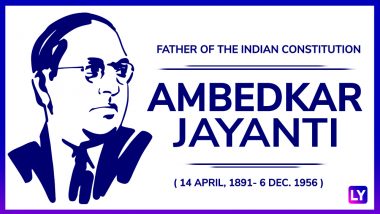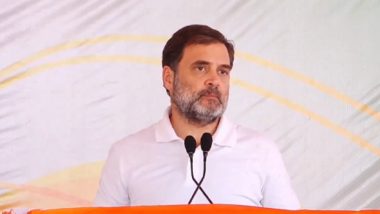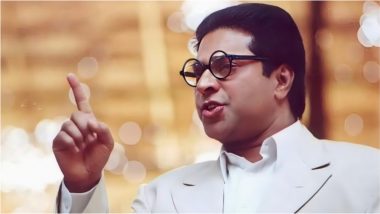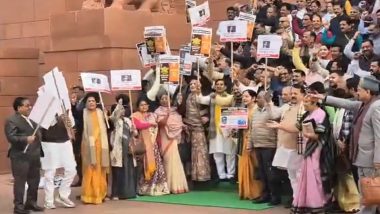April 14, 2018 marks the 127th birth anniversary of Bhimrao Ramji Ambedkar, popularly and lovingly called as Babasaheb Ambedkar or Dr. BR Ambedkar. Dr Ambedkar's followers share wishes and messages on this day to celebrate the birth of their beloved leader. The father of Indian constitution and independent India’s first minister of Law and Justice was also an extraordinary scholar and thinker on issues of social and economic importance. The life of this remarkable jurist and political thinker can be divided into three main chapters: Dr Ambedkar as a student; as a political and economic thinker and activist; and Dr. Ambedkar as India’s Law minister and principal head of the drafting of Indian Constitution. The best way to get a grasp of Dr Ambedkar's personality is by going through his quotes that cover a broad spectrum of social, economic and other aspects of life.
Dr. Ambedkar was born on April 14, 1891 in the military cantonment of Mhow which is now in Madhya Pradesh. His father, Ramji Maloji Sakpal had 14 children and Ambedkar was his last child. His mother was Bhimabai Sakpal and she was daughter of Laxman Murbadkar. Dr. Ambedkar’s family hailed from the town of Ambadawe in Maharashtra and the family belonged to Mahar caste- considered to be a brave martial caste but were treated as untouchable dalits. Ambedkar’s ancestors and his father had worked in the British Indian Army at the Mhow cantonment. Dr Ambedkar experienced discrimination even in school as a young boy both inside and outside the classroom. The students who were considered lower caste were made to sit separately in school, including Ambedkar and he wasn’t even allowed to drink water as only higher caste students had the privilege to. The students from non-higher castes and, especially untouchables as they were called, had the water poured for them from height, usually by the school peon. This differentiation on the basis of caste had a huge impact on Ambedkar’s mind and he made it his mission to fight the evil of caste from the society.
After few years at village school, Ambedkar got enrolled at Elphinstone High School after his family moved to Bombay (now Mumbai). In the year 1907, he cleared the matriculation exam and enrolled himself for higher studies becoming the first untouchable to do so. There was even a felicitation programme held to celebrate his achievement and it was here that he first got introduced to lord Buddha when Dada Keluskar, an author presented him the biography of Buddha. Ambedkar would go on to embrace Buddhism as his religion in the last months of his life. Also, his hunger for knowledge and scholarship had started to reflect from this point onward. After completing his degree in 1912 from economics and political science from University of Bombay, Ambedkar prepared to work for Baroda state government as he had been already wedded off by his family. He was married to Ramabai, when he was around 15-years-old and she was nine-years old. Child marriage was the norm back then in the society.
Ambedkar’s quest for knowledge took him to the United States when he was all of 22. He had received a scholarship from the Baroda government under a scheme for three years for pursuing post-graduate studies at the prestigious Columbia University in New York City. Ambedkar passed M.A exam in 1915 and majored in Economics with other subjects such as Sociology, History, Philosophy and Anthropology. His thesis was titled “Ancient Indian Commerce” and it was during this period that he came in contact with professors and academicians whom he described as “my great professors, John Dewey, James Shotwell, Edwin Seligman, and James Harvey Robinson.'" For his outstanding achievement, he was honored by students and professors of the Faculty of Arts at a special dinner. In 1916 he offered another M.A. thesis, "National Dividend of India--A Historic and Analytical Study" mentions the book on Dr. Ambedkar by Dhananjay Keer.
Then in October 1916, Ambedkar enrolled for the Law course (Bar examination- a test determining if a candidate is qualified to practice law) at the prestigious Grey’s Inn in London. Alongside, he started working on his doctoral thesis at the London School of Economics. But he had to return to India as his scholarship ended in June 1917. Not the one to leave things incomplete, Ambedkar requested the Baroda administration to allow him to finish his educaton and submit his advanced thesis. He got a four-year time to resume and complete his studies. His achievement during these four years was prolific and prodigious to say the least. He completed his master’s degree in 1921 and submitted his famous thesis "The Problem of the Rupee: Its Origin and its Solution". He also completed his D.SC. in Economics and was called to the Bar by Gray’s Inn.in 1923. To put it simply, Ambedkar achieved in three years what it would take others close to seven years to complete academically.
Dr. Ambedkar had taken up teaching and other jobs when he had returned after his scholarship had ended before going back to study again. His experience with the upper caste and Brahmin professors when teaching at Sydenham College of Commerce and Economics further resolved his will to fight casteism and liberate the untouchables from the shackles of Hindu society. In the year 1919, Ambedkar had been called before the Southborough Committee which was framing the Government of India Act 1919 to govern India. At the hearing, Ambedkar argued for a separate electorate for the dalits and untouchables. He also sought reservations for untouchables and minorities. In 1920, he began the publication of the weekly magazine called Mooknayak. Ambedkar also practiced law successfully during this period at the Bombay High Court and established the Bahishkrit Hitakarini Sabha, an organisation with an aim to promote the socio-economic improvement of the downtrodden who were also called the depressed classes back then.
Ambedkar participated heavily in social movements beginning from this period. He began public movements and led a march to make available drinking water in villages for the untouchables. There was also the struggle organised by him to gain the right of worship for dalits and lower castes in temples as they were not allowed to visit temples then. The Mahad Satyagraha led by him on March 20, 1927 – where he took a large crowd with him and drank water from the “Chowdar tank” became an important symbol of victory for the dalits and untouchables as they were not even allowed near the water-tanks let alone drink from it. On December 27, 1927, Dr Ambedkar with his followers burnt the Manusmriti, the holy book of Hindus that propagated discrimination on the basis of caste/class and called it the book of inequality. This was a radical and bold move from the leader.
The Poona Pact, which is now remembered for the ideological clash between Dr. Ambedkar and Mahatma Gandhi and brought forth the differences in approach towards fighting untouchability between the two great leaders, showed his conviction in having a separate electorate for the untouchables. Though Dr. Ambedkar relented and gave up the demand for separate electorate as Mahatma Gandhi went on fast until death as he opposed the view on the ground that such an act would divide the Hindu society, Ambedkar’s voice ensured that the depressed classes who went on to be called the Scheduled Castes and Scheduled Tribes in the Constitution of India, received 148 seats in the legislature instead of 71 as was initially allotted by then British Prime Minister Ramsay MacDonald. Ambedkar also founded the Independent Labour Party in the year 1936 and published his most famous book, Annihilation of Caste in the same year. Ambedkar remained active in politics and kept publishing books and articles during the period between 1936 and 1947.
After India’s Independence, the newly formed government invited him to become India’s first Law Minister. He accepted the post and was appointed as the Chairman of the Constitution Drafting Committee to look after the making of Independent India’s constitution. The text drafted under Ambedkar ensured civil rights and reservations for scheduled castes, tribes and other backward classes under affirmative action. The constitution was adopted on November 26, 1949 and came into effect on January 26, 1950.
In the last years of his life, Dr. Ambedkar converted to Buddhism along with some 500,000 of his followers. Dr. Ambedkar was far ahead of his times. Babasaheb Ambedkar opened colleges in Mumbai and Maharashtra which help thousands of students to attain their educational goals and provides them dignity in the society. He wrote on vast range of topics which included essays on women empowerment, labour reforms, linguistic questions among others. His legacy is very much alive today and he serves as an inspiration for millions in the country. His formula given to the down-trodden for empowerment was: Educate, Agitate and Organise, and it still resonates with the masses. He was awarded the Bharat Ratna posthumously in 1990. The United Nations (UN) celebrated his 125th birth anniversary which was in the year 2016 and called him a “global icon.” To conclude, there can't be better words than the ones used by writer Dhananjay Keer, in his highly acclaimed and authoritative biography titled Dr. Ambedkar- Life and Mission wrote in the preface: "Ambedkar's eternal search for knowledge, his incredible industry and his unflinching aim with which he raised himself from dust to doyen, from the life of a social leper to the position of a constitution-maker, and his heroic struggles for raising the down-trodden to human dignity will constitute a golden chapter in the history of this nation and in the history of human freedom as well."
(The above story first appeared on LatestLY on Apr 14, 2018 12:00 AM IST. For more news and updates on politics, world, sports, entertainment and lifestyle, log on to our website latestly.com).













 Quickly
Quickly





















